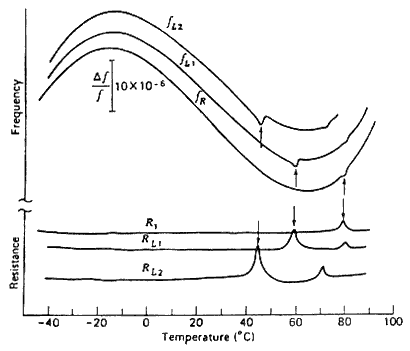
Frequency perturbations, also referred to as activity dips, can be difficult to spot in crystal oscillators. But a single perturbation can cause major problems in an application’s signal, including within GPS or missile systems.
Imagine launching a missile and then losing control of its navigation. Or getting a very inaccurate GPS velocity reading of an aircraft. These (and many other problems) can be caused by a failure to spot activity dips in crystals.
In this article, we'll help you understand what frequency perturbations are and how to prevent them from occurring in crystal oscillators.
What Are Frequency Perturbations?
There are many different types of modes that can be excited during the resonance of a crystal. "Coupled modes,” commonly referred to as activity dips or frequency perturbations, occur when two or more excited modes/harmonics pulse at the same rate. Many modes, with their corresponding harmonics, can couple into the primary mode at a specific temperature and cause a dip in the performance of a crystal.
An activity dip also causes frequency changes over certain temperature ranges. In some cases, this frequency deviation can make the oscillation stop altogether. These activity dips are more common with smaller crystals.
Frequency perturbations can have negative impacts during signal processing. For example, frequency spikes caused by activity dips can cause two major problems in GPS receivers:
- The frequency spikes can be falsely interpreted as changes in velocity by the GPS.
- A strong frequency spike can lead to complete GPS disconnection from satellites.

Image Source: www.oscilent.com
Amplitude & Gradient
Amplitude and gradient must be taken into account for activity dips. Their definitions are as follows:
Amplitude = peak-to-peak ppm
Gradient = ppm/°C
Activity dips can occur anywhere from a half degree deviation to multiple degrees. Different applications can tolerate different levels of frequency perturbations over different temperature ranges.
That's why it’s important to note how much of an amplitude or gradient spike an application can tolerate. The type of chipset, software, or system application can impact an application’s tolerance.
Going back to our GPS example, GPS receivers can track frequency spikes at some level, but are restricted by their carrier-tracking loop. Their tolerance can be impacted by loop type, order, and bandwidth.
Preventing Frequency Perturbations in Crystal Oscillators
It’s extremely difficult to completely eliminate frequency perturbations in all crystal oscillators. Every crystal must be carefully tested in production to spot activity dips over even half a degree temperature deviation.
As previously mentioned, a small activity dip can cause significant operating problems for short periods of time, or even completely disrupt the signal for good. Testing the crystals in an environment-controlled chamber over the operating temperature range is one of the most effective methods for spotting those pesky frequency perturbations.
Related: Can a Crystal Oscillator Operate Outside of the Specified Temperature Range?
One of the best ways to prevent frequency perturbations is to choose a trusted crystal oscillator manufacturer that uses state-of-the-art testing equipment to catch even the smallest activity dips. Bliley has over 85 years of experience creating some of the highest quality and trusted crystals in the entire universe! We produce a full line of high performance crystal oscillators.
Another way of preventing frequency perturbations and drift is to locate and eliminate the top sources of frequency drift. The challenging part is that there are so many possible sources out there waiting to throw off your application's frequency.
We made it easy for you and compiled a checklist of some of the most common sources of frequency drift. Download your free copy!






